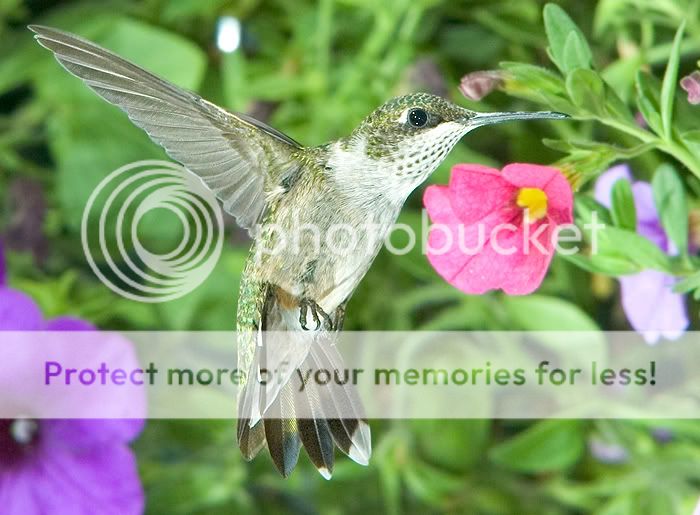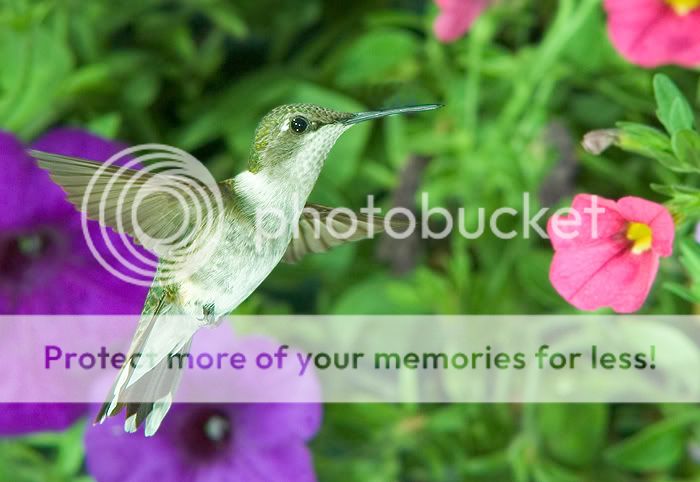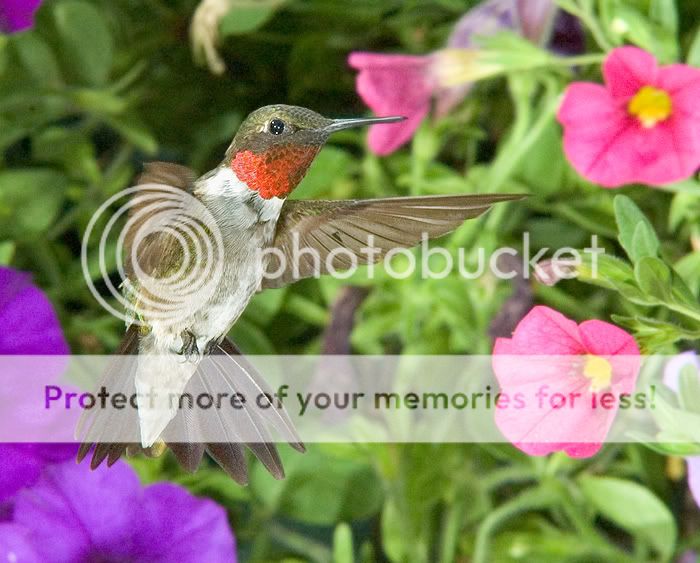breasons said:
Hello everyone!
I was wondering if any one has any helpfull info on this type of flash.Just started
takeing pictures of hummers,but haveing trouble getting a sharp picture.
Thanks for your help.
i ran into the same challenge recently. while i use nikon gear, the obstacles are the same. you can read
here the input i received from nikonians (nikon user site), click
here for one user's example of tricking camera for high-speed flash, and click
here for my latest results
not using high-speed flash trick.
bottom line: if you are seeking the
doc edgerton effect, then you must rely on the flash burst to freeze the moment; shutters just cannot match that speed. otherwise, you can use the blur for a pleasing artsy-fartsy effect (as i've learned).
more advice for shooting hummers:
1) catching them feeding near feeders/flowers slows them down, and even makes them hover a while so you can shoot. early mornings (sunrise) is a good time.
2) try and position yourself to not show the feeder, or minimize it's presence, in the viewfinder
3) make sure the background is an even color (and distant), to isolate the details of the bird
4) learn species behavior (i've found that rufous are very aggressive and territorial, so will charge gentler broad-tailed hummers) to position yourself
5) practice, practice, practice (
most of your shots will be out-of-focus, they just fly too fast!)
6)
your shoulders will go numb hand-holding the camera
7) have fun! :hippy:






